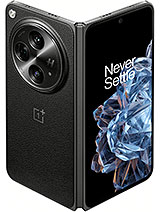Google Pixel 8 Pro alternatives
Tap above to see alternatives.
Motorola Razr 50 Ultra alternatives
Tap above to see alternatives.
Google Pixel 8 Pro

Google Pixel 8 Pro
-
Tensor G3
4 nm
-
5050 mAh
30W
-
6.7"
1344x2992 pixels
-
50 MP
4K@30/60fps
- Specs
Motorola Razr 50 Ultra

Motorola Razr 50 Ultra
-
Snapdragon 8s Gen 3
4 nm
-
4000 mAh
45W
-
6.9"
1080x2640 pixels
-
50 MP
4K@30/60fps
- Specs
1x3.0 GHz Cortex-X3
4x2.45 GHz Cortex-A715
4x2.15 GHz Cortex-A510
1x3.0 GHz Cortex-X4
4x2.8 GHz Cortex-A720
3x2.0 GHz Cortex-A520
12GB 256GB (UFS 3.1)
12GB 512GB (UFS 3.1)
12GB 1024GB (UFS 3.1)
f/1.7, 25mm (wide), 1/1.31", 1.2µm, dual pixel PDAF, multi-zone Laser AF, OIS
48 MP
f/2.8, 113mm (telephoto), 1/2.55", 0.7µm, dual pixel PDAF, OIS, 5x optical zoom
48 MP
f/2.0, 126˚ (ultrawide), 0.8µm, dual pixel PDAF
f/1.7, 24mm (wide), 1/1.95", 0.8µm, dual pixel PDAF, OIS
50 MP
f/2.0, (telephoto), 1/2.76", 0.64µm, PDAF, 2x optical zoom
1080p@24/30/60/120/240fps
1080p@30/60/120/240/960fps
f/2.2, 20mm (ultrawide), 1/3.1", 1.22µm, PDAF
f/2.4, (wide), 0.7µm
1080p@30/60fps
1080p@30/60fps
SIM1: Nano, SIM2: eSIM
SIM1: Nano, SIM2: eSIM
21 5G bands
n1, n2, n3, n5, n7, n8, n12, n20, n25, n26, n28, n30, n38, n40, n41, n66, n71, n75, n76, n77, n78
17 5G bands
n1, n2, n3, n5, n7, n8, n20, n26, n28, n38, n40, n41, n66, n71, n75, n77, n78
In this performance comparison, the Motorola Razr 50 Ultra with its Qualcomm Snapdragon 8s Gen 3 (4nm) performs better than the Google Pixel 8 Pro with the Google Tensor G3 (4nm), thanks to superior chipset efficiency.
Google Pixel 8 Pro offers 7 years of OS updates, whereas Motorola Razr 50 Ultra provides 3 years. For security updates, Google Pixel 8 Pro offers 7 years of support compared to Motorola Razr 50 Ultra's 5 years.
Both Google Pixel 8 Pro and Motorola Razr 50 Ultra feature AMOLED displays, offering vibrant colors and deeper blacks. In terms of smoothness, Motorola Razr 50 Ultra offers a higher 165 Hz refresh rate, ensuring fluid scrolling and animations. Motorola Razr 50 Ultra also boasts a brighter screen with 3000 nits of peak brightness, enhancing outdoor visibility. Notably, Google Pixel 8 Pro offers a higher screen resolution, resulting in sharper visuals and more detailed content.
Google Pixel 8 Pro comes with a larger 5050 mAh battery, which may offer longer usage on a single charge. Motorola Razr 50 Ultra also supports faster wired charging at 45W, compared to 30W on Google Pixel 8 Pro. Google Pixel 8 Pro offers faster wireless charging at 23W, while Motorola Razr 50 Ultra supports 15W.
Google Pixel 8 Pro offers better protection against water and dust with an IP68 rating.
¹ Scores can vary even with the same chipset due to RAM, thermals, and software optimization.










